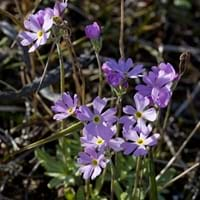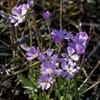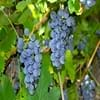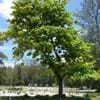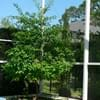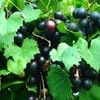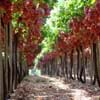What is
Life Span
Perennial
Perennial
Type
Perennial
Grass
Origin
Northeastern United States, Mid-Atlantic United States, Southeastern United States, North-Central United States, Central United States, South-Central United States
China
Types
Not Available
Not Available
Habitat
Roadsides, sand dunes, Waste areas
Forest margins, gardens, Grassland, Tropical regions
USDA Hardiness Zone
5-8
8-15
AHS Heat Zone
8-1
12 - 1
Sunset Zone
1a, 1b, 2a, 2b, 3a, 3b, 4, 5, 6, 7, 8, 9, 10, 11, 12, 13, 14, 15, 16, 17, 18, 19, 20, 21, 22, 23, 24
H1, H2, 8, 9, 14, 15, 16, 17, 18, 19, 20, 21, 22, 23, 24
Habit
Clump-Forming
Clump-Forming
Information
Plant Size
Minimum Height
610.00 cm
99+
460.00 cm
99+
Minimum Width
460.00 cm
99+
Not Available
Plant Color
Flower Color
White, Ivory
Not Available
Flower Color Modifier
Bicolor
Bicolor
Fruit Color
Tan
Not Available
Leaf Color in Spring
Green
Light Green, Dark Green
Leaf Color in Summer
Green
Light Green
Leaf Color in Fall
Green
Light Green, Dark Green
Leaf Color in Winter
Light Green
Light Green, Dark Green
Shape
Leaf Shape
Oblong
Grass like
Thorns
No
No
Season
Plant Season
Summer
Spring, Summer, Fall, Winter
Growing Conditions
Sunlight
Full Sun, Partial Sun
Full Sun, Partial Sun, Partial shade
Growth Rate
Medium
Fast
Type of Soil
Loam, Sand
Loam, Sand
The pH of Soil
Acidic, Neutral, Alkaline
Acidic, Neutral, Alkaline
Soil Drainage
Well drained
Average
Bloom Time
Early Summer, Summer, Late Summer
Not Available
Repeat Bloomer
Yes
No
Tolerances
Variety of soil types
Drought
Care
Where to Plant?
Container, Ground, Pot
Ground, Pot
How to Plant?
Divison, Seedlings, Stem Planting
Seedlings, Transplanting
Plant Maintenance
Low
Medium
Watering Plants
Watering Requirements
Average Water Needs, Do Not over Water, Never Over-water, Requires regular watering, Water more in summer
Keep the ground moist but not water-logged, Requires regular watering, Use and maintain water-efficient soaker hoses, Use Mulches to help prevent water loss during hot and windy weather, Water every two or three days during warmer months, Water twice a day in the initial period
In Summer
Lots of watering
Lots of watering
In Spring
Moderate
Moderate
In Winter
Average Water
Average Water
Soil
Soil pH
Acidic, Neutral, Alkaline
Acidic, Neutral, Alkaline
Soil Type
Loam, Sand
Loam, Sand
Soil Drainage Capacity
Well drained
Average
Sun Exposure
Full Sun, Partial Sun
Full Sun, Partial Sun, Partial shade
Pruning
Remove damaged leaves, Remove dead branches, Remove dead leaves, Remove dead or diseased plant parts
Remove damaged leaves, Remove dead branches, Remove dead leaves
Fertilizers
All-Purpose Liquid Fertilizer, fertilize in growing season
All-Purpose Liquid Fertilizer
Pests and Diseases
Slugs, Snails
Red blotch
Plant Tolerance
Variety of soil types
Drought
Facts
Flowers
Yes
None
Flower Petal Number
Single
Single
Fruits
Showy Fruit
No
No
Edible Fruit
No
No
Fragrance
Fragrant Flower
No
No
Fragrant Fruit
No
No
Fragrant Leaf
No
No
Fragrant Bark/Stem
No
No
Showy Foliage
No
No
Showy Bark
No
Yes
Foliage Texture
Fine
Medium
Foliage Sheen
Matte
Matte
Evergreen
No
No
Invasive
No
No
Self-Sowing
Yes
No
Attracts
Insects
Birds
Allergy
Abdominal pain, Constipation, Diarrhea, Skin irritation
no allergic reactions
Benefits
Uses
Aesthetic Uses
Beautification, Borders, Landscape Designing, Showy Purposes
Beautification
Beauty Benefits
Good for skin, Making cosmetics, Stops hair loss
Not Available
Edible Uses
Yes
Yes
Environmental Uses
Air purification, Food for insects, Versatility
Air purification
Plant Benefits
Medicinal Uses
Eczema
Not Available
Part of Plant Used
Root
Whole plant
Other Uses
Decoration Purposes, Medicinal oil, Showy Purposes, Used as Ornamental plant, Used for its medicinal properties
Culinary use, Used in construction, Used in Furniture, Used in making musical instruments, Used in paper industry
Used As Indoor Plant
Yes
No
Used As Outdoor Plant
Yes
Yes
Garden Design
Edging, Feature Plant, Groundcover, Mixed Border
Container, Feature Plant, Hedges, Screening / Wind Break, Tropical
Scientific Name
Botanical Name
Primula mistassinica
BAMBUSA multiplex 'Alphonso-Karrii'
Common Name
Mistassini primrose, Lake Mistassini primrose, bird's-eye primrose
Alphonse Karr Bamboo, Clumping Bamboo, Hedge Bamboo
In Hindi
Mistassini Primrose
अल्फोंस Karr बांस
In German
Mistassini Primrose
Alphonse Karr Bamboo
In French
Primrose Mistassini
Alphonse Karr Bamboo
In Spanish
Mistassini Primrose
Alphonse Karr Bambú
In Greek
Mistassini Primrose
Alphonse Karr Μπαμπού
In Portuguese
Mistassini Primrose
Alphonse Karr Bamboo
In Polish
Mistassini Primrose
Alphonse Karr Bamboo
In Latin
Mistassini Primrose
Alphonse Karr Bamboo
Classification
Kingdom
Plantae
Plantae
Phylum
Magnoliophyta
Not Available
Class
Magnoliopsida
Not Available
Order
Myrtales
Poales
Family
Onagraceae
Poaceae
Genus
Oenothera
Bambusa
Clade
Angiosperms, Eudicots, Rosids
Angiosperms, Commelinids, Monocots
Tribe
Onagreae
Bambuseae
Subfamily
Onagroideae
Bambusoideae
Number of Species
145
99+
Not Available
|
||
|
||
|
